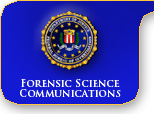Introduction
The purpose of this document is to describe the proper method of photographing tire impression evidence by qualified personnel.
It is recommended that digital cameras not be used for capturing tire impression evidence until research identifying the minimum resolution required to record these impressions is complete.
Recommended Equipment
- Professional camera, minimum 35mm, with interchangeable lenses, manual override for exposure and focus, off-camera flash and remote shutter capability, and tripod mount
- Macro lens capable of 1:1
- Dedicated electronic flash with extension cable for off-camera operation
- Remote shutter release
- Tripod capable of various angles and positions
- Artificial light sources (e.g., floodlights, flashlights)
- Leveling device
- A variety of black-and-white and color negative film
- Appropriate scales
- Photographic log
- Reflector
- Device for blocking ambient light
Procedure for Tire Impression Photography
A typical standard operating procedure should include the following:
- Locate the visible impressions to be photographed.
- Photograph the overall view of the area with identifying markers for each impression using appropriate lighting.
- Photograph the midrange view of the impression area with the identifying marker.
- To photograph a close-up view:
- Mount the camera on a tripod with the film plane parallel to the impression.
- Take multiple overlapping exposures, mapping the entire tire impression.
- Light each overlapping section of the impression to bring out the maximum detail. Multiple exposures using various settings (bracketing) and lighting techniques may be required.
- Photograph with a scale. The scale should be placed along the entire length of the impression without obscuring detail.
- If the impression is processed (e.g., with fingerprint powder or chemicals), re-photograph after each process.
- Prepare the photographic log or worksheet according to agency policy.
|
